Serbia / Република Србија – Let’s explore here
What’s it like in Serbia?
Serbia is an incredibly beautiful landlocked country in the Balkans, in southern Europe. You would be hard pressed to find more lovely countryside! Pictures really don’t do it justice at all!
Throughout the centre of the country the terrain is mainly beautiful rolling hills traversed by rivers. In the south mountains dominate, and the Dinaric Alps stretch across the west and the south west. The highest point (excluding Kosovo) is Mount Midžor, on the border with Bulgaria, at 7,116 ft (2,169m) above sea level. The north sits in a very flat plain, in the same way as Hungary.
Serbia’s population is around 6½million people (2023) and it shares land borders with Albania, Bosnia and Herzegovina, Bulgaria, Croatia, Hungary, Montenegro, North Macedonia, Romania, as well as with the disputed state of Kosovo.
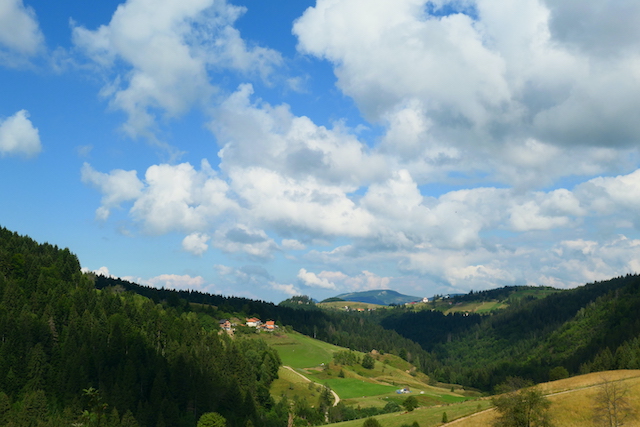
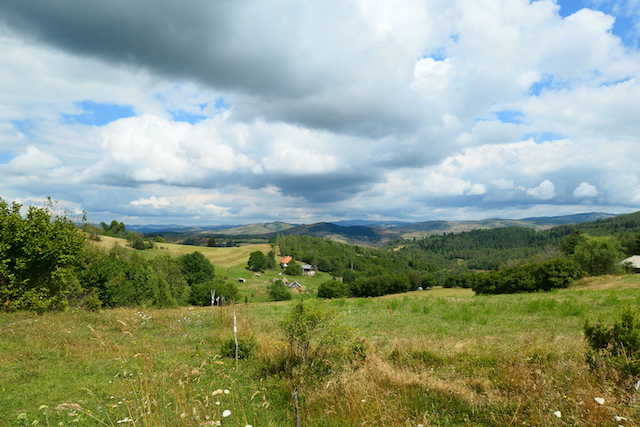
A bit about the history of Serbia
Early History and the Rise of the Serbian State
Serbia’s history dates back to the early medieval period, when Slavic tribes settled in the region during the 6th and 7th centuries. The first notable Serbian state, the Principality of Serbia, emerged in the 9th century. Under the rule of the Vlastimirović dynasty, Serbia gradually expanded its territory. In the 12th century, under the leadership of the Nemanjić dynasty, Serbia became a powerful kingdom, reaching its peak in the 14th century under Tsar Stefan Dušan.
The Ottoman Period
In the mid 15th century, the Ottoman Empire expanded into the Balkans, and Serbia was conquered by the Ottomans in 1459. The Ottoman occupation lasted for several centuries, during which Serbia was governed as part of the Ottoman Empire. Despite this, there was ongoing resistance and periodic uprisings by the Serbian population. This period deeply influenced Serbian culture, religion (as the majority of Serbs remained Orthodox Christians), and social structures.
The Struggle for Independence
The early 19th century saw a growing desire for independence from the Ottoman Empire. The First Serbian Uprising (1804-1813) marked the beginning of Serbia’s fight for autonomy, led by Karađorđe Petrović. Although the uprising was temporarily crushed, the Second Serbian Uprising (1815-1817), led by Miloš Obrenović, was successful in establishing the autonomous Principality of Serbia. Serbia gained full independence in 1878 at the Congress of Berlin.
Kingdom of Serbia and World War I
Serbia became a kingdom in 1882, with the establishment of the Kingdom of Serbia under King Milan I. The country played a significant role in the Balkan Wars (1912-1913), which saw the defeat of the Ottoman Empire in the Balkans. However, Serbia’s role in World War I was the catalyst for major change. After the assassination of Archduke Franz Ferdinand in Sarajevo in 1914, which was carried out by a Bosnian Serb nationalist, Serbia became embroiled in the war. Serbia was invaded by Austro–Hungarian forces but eventually emerged victorious, though much of its territory was devastated.
Yugoslavia and the Interwar Period
After World War I, the Kingdom of Serbs, Croats and Slovenes was formed in 1918, uniting several South Slavic nations, including Serbia, into a single state. In 1929, the kingdom was renamed Yugoslavia. During the interwar period, political instability and ethnic tensions between the different groups within Yugoslavia marked the country’s history. Serbia was the dominant power in the kingdom, but the country struggled with internal divisions and external pressures.
World War II and the Communist Era
During World War II, Yugoslavia was invaded by Nazi Germany. Serbia was occupied, and many Serbs were subjected to persecution, including a campaign of genocide by the Ustaše regime in the Independent State of Croatia. After the war, the Communist Partisans, led by Josip Broz Tito, took control, and Yugoslavia was reformed as a socialist federation. Serbia was one of the six republics in the Socialist Federal Republic of Yugoslavia, and Tito’s leadership ensured a period of relative stability, although political repression was common.
Breakup of Yugoslavia and the Kosovo Conflict
In the 1990s, Yugoslavia began to disintegrate as nationalist movements grew in the republics. Serbia, under the leadership of Slobodan Milošević, became embroiled in conflicts with other republics that sought independence, including Croatia and Bosnia. The Kosovo War (1998-1999) was a significant event, with the Serbian government fighting against ethnic Albanian separatists. NATO intervened, and Kosovo was placed under UN administration. In 2006, Serbia and Montenegro formally separated, and Serbia became an independent state once again.
Modern Serbia
In the 21st century, Serbia faced the challenge of rebuilding and moving toward European integration. The declaration of independence by Kosovo in 2008 has been a contentious issue, as Serbia continues to refuse to recognise Kosovo as an independent state. Serbia has pursued closer ties with the European Union while maintaining its historical ties with Russia. Despite economic challenges and political instability, Serbia is working to modernise and strengthen its economy and political institutions. Today, Serbia is a republic with a parliamentary system, striving to balance its national identity with its aspirations for greater integration into European and global structures.
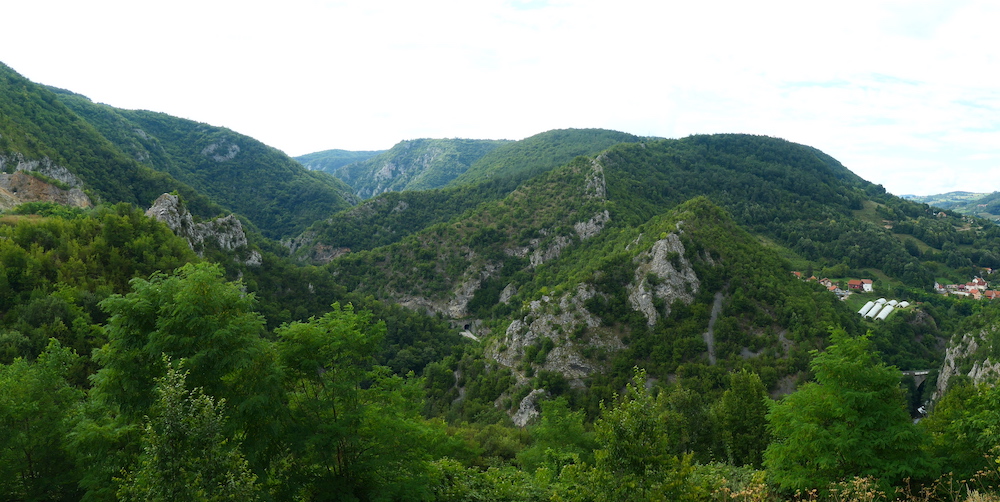
Serbia road trip
We’ve created a blog for our road trip through Serbia. You may find it helpful, and you may pick up some tips, or more likely mistakes not to make that we’ve made 😉 Our Serbian road trip was part of a much larger European road trip.
We planned our road trip carefully in Serbia, because Serbia doesn’t recognise Kosovo as a separate country – therefore we needed to ensure that we could cross into Kosovo without upsetting Serbian border guards!
Serbia is the land of tall, beautiful people and heavy smokers! Difficult finding a hotel room that doesn’t smell of smoke in Serbia – you have to specifically request it, it seems! And you can still smoke in restaurants! Who knew?!
Northern Serbia
On our Serbian road trip we travelled from a stud farm in the south of Hungary and stayed overnight in one of the prettiest towns in Serbia, Sremski Karlovci. Much like Hungary, the journey to Sremski Karlovci is very flat. The town is a historic marvel, with many of the buildings having been excellently preserved from medieval times.
Western Serbia
We sought out mountains and headed south west through some stunning vistas to Valijevo, Nova Varos and the magnificent Uvac canyon.
Valijevo was amazing, so full of life and café culture. Loads to do and see, and some super friendly people in the many shops. We needed up kitting ourselves out for the upcoming wedding in Italy in Valijevo.
Nova Varos was also incredible, right in the mountains, with incredibly friendly citizens. And wow, it’s good value for money there!! It has to be said though that some of the streets are very narrow, and some are the steepest we’ve ever driven!!
And as for Uvac canyon, again wow! What a sight! It used to be difficult to get to the canyon, but now the road has been upgraded and is silky smooth. The same cannot be said for the other roads in the area though 😉
The capital
The journey towards the capital, Belgrade, was awesome, as was the capital itself. The fortress was surprise, and all the beautiful people, and the atmosphere, and the fantastic food :). The only downside for us was the accommodation, although we were probably just unlucky, as everywhere else in Serbia it was excellent!
Eastern Serbia
After the capital, we continued our road trip through the beautiful countryside of Serbia by heading east to Golubac Fortress and the magnificent Derdap Gorge, before moving on to Romania. Golubac Fortress is sensational, as is the Derdap Gorge, bot of which are a must when in Serbia.
Map of our road trip through Serbia
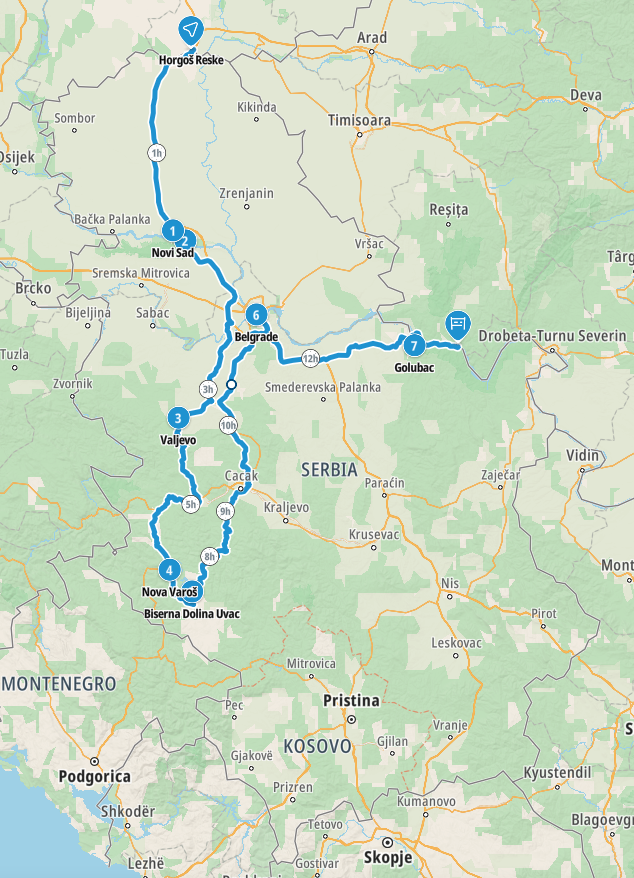
This is a map of our road trip through Serbia.
Our route took us from Horgoš – Novi Sad – Sremski Karlovci – Valijevo – Nova Varoš – Uvac canyon – Belgrade – Golubac fortress – Derdap gorge – Novi Sip.
Serbia road trip part 2
On our return from the far reaches of Europe and the Caucasus, we travelled back through Serbia via Bulgaria, before heading on to Croatia. Having travelled nigh on 25,000 miles, and as we were returning to the UK for Christmas, we didn’t spend too much time in Serbia on this road trip.
We did however stop in Niš for a break before staying over in Sremska Mitrovica. Serbia is great as its such good value for money and the people are genuinely nice. that said, not much is open on a Sunday outside of the big cities, but I guess that’s what seta them apart from over-commercialised Britain.
Map of our second road trip through Serbia
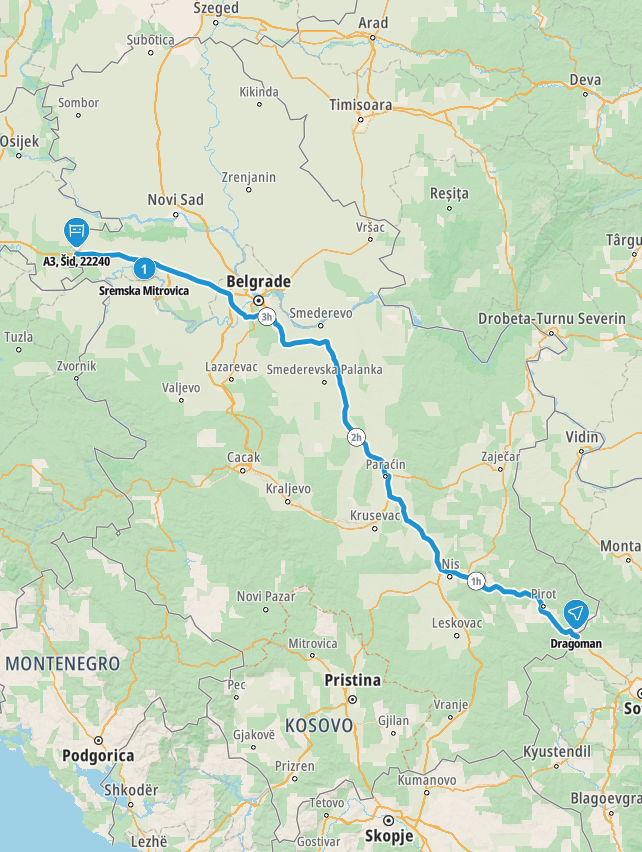
This is a map of our second road trip through Serbia, from Bulgaria to Croatia.
Our route took us from Gradinje – Niš – Sremska Mitrovica – Batrovci
We’ve been to several countries in the Balkans, but we didn’t know Serbia well at all. It absolutely stunned us – it really is beautiful in all parts of the country, but in particular in the west, east, south and centre 🙂

We met a whole load of Serbians – they’re certainly not afraid to approach you and ask you questions. Most were really lovely – although there were a few loose cannons and a couple of thieves – see the blog for more information! In the main, they’re clearly a very proud people full of confidence. And it seems that they’ve not adopted many of the same public health measures that much of Western Europe has!
Our favourite places in Serbia
These are some of the best places that we explored on our road trips through Serbia. We’ve put them in alphabetical order.
Belgrade
The mighty Belgrade! What a fantastic city – absolutely full of life, with a great atmosphere. There’s masses to do and see, and people are genuinely very friendly. Many also speak English in the capital we found, in particular the younger generations.
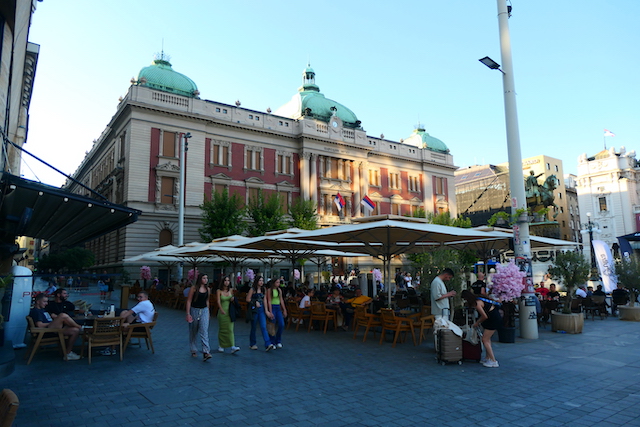
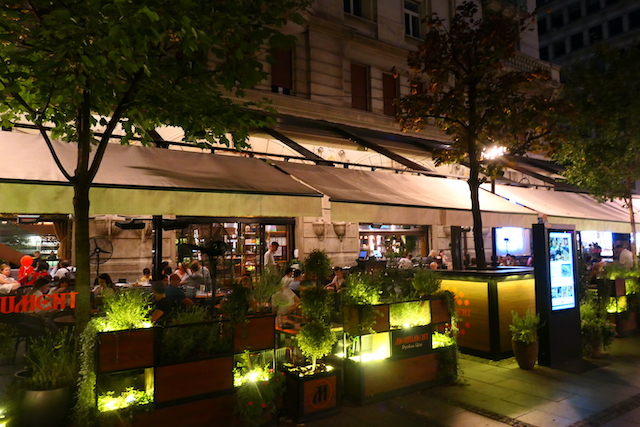

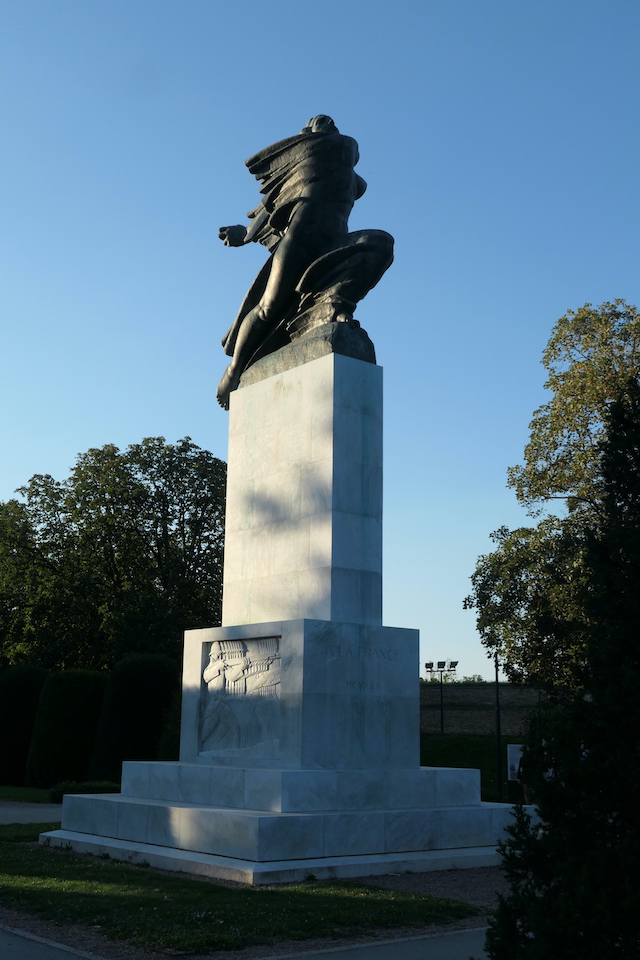
Derdap Gorge
Separating Serbia from Romania is the natural ‘Iron Gates’ Derdap Gorge. Driving along its length takes in magnificent views interspersed with small tunnels that prevent you from seeing what’s up ahead, providing added excitement! You can easily see why this has been a natural border between the two countries, and it really is a ‘must see’ for anyone in the area. The photos really don’t do it’s awesomeness any justice!
You can also take in the mighty Golubac Fotress (see below) and view the rock sculpture of Decebalus from the opposite side of the gorge.

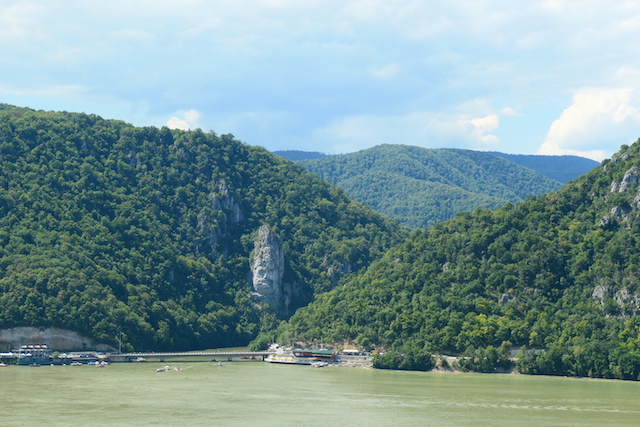
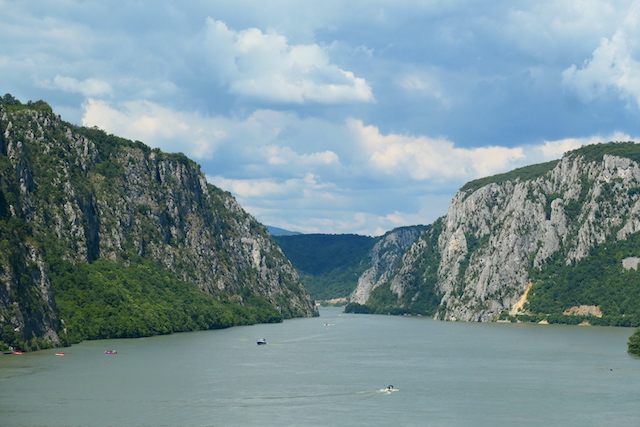
Golubac Fotress
Golubac Fotress is a beautiful 14th century fortress located in the east of Serbia, near the border with Romania. It’s located at the start of the stunning Derdap Gorge and the Derdap national park. Parking can be difficult at busy times, although you can park for free 1km to the north. There is a cost to enter the fortress, though not to enter the cafe and enjoy a coffee overlooking the fortress and Romania.
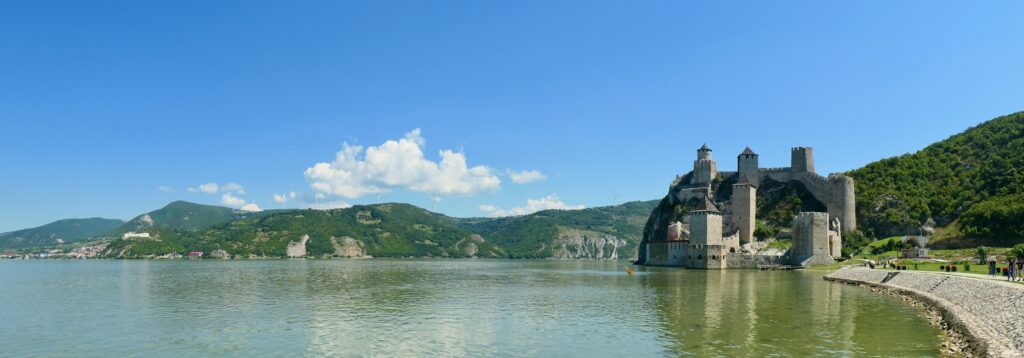
Sremski Karlovci
A very pretty village in the north of the country which has managed to maintain much of its former glory. There are a number of lovely buildings, as well as lots of restaurants and bars in the centre, and the people are very laid back and friendly. Well worth a day trip if in the area!
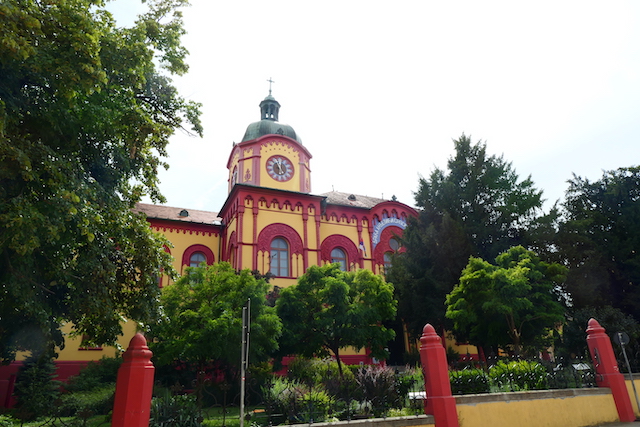
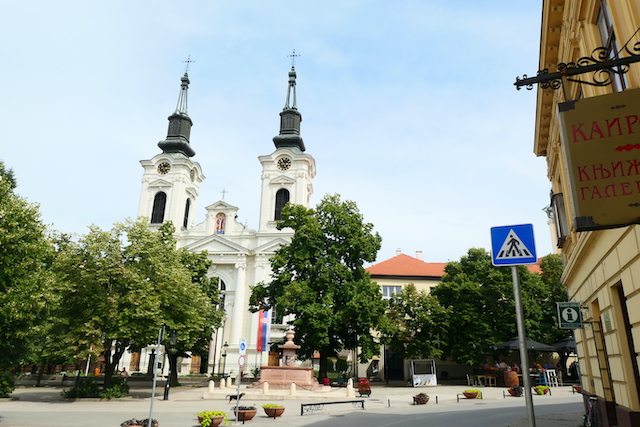
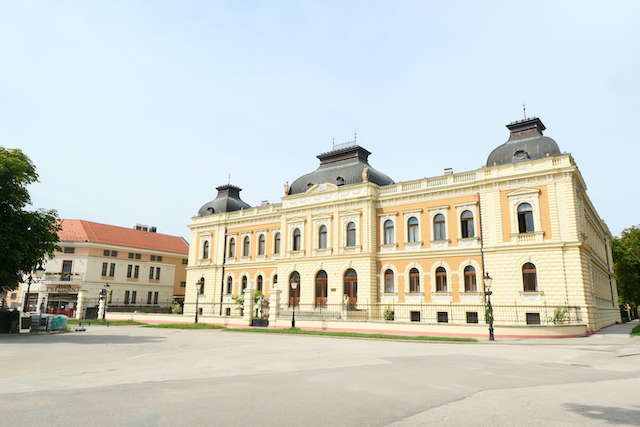
Uvac canyon
Uvac canyon is located in the west of Serbia, relatively near to Nova Varoš. As an old river, the Uvac twists and turns to form a spectacular canyon. It used to be difficult to access the canyon’s best viewpoints, however (as of 2023) brand new roads have been constructed, making the journey simple and well worthwhile.

What’s it like to drive in Serbia?
As with almost everywhere on the continent of Europe, they drive on the right hand side of the road in Serbia.
What are the road conditions in Serbia?
The roads in Serbia are a real mixed bag. We can only speak of non-toll roads, and in the main they’e pretty good, and there’s a lot of construction work being undertaken to upgrade the roads … in the main!
We say this because there are a whole set of roads that are just terrible, where only part of the road is actually drivable – with huge potholes, no tarmac or gravel and both directions of traffic vying for the best places to go to pass each other! Some of these roads look like they’re been this way for a long time, and locals are always polite and slow down.
There are also many roads in the small towns in the mountainous west where the gradients are steeper than 1 in 3, which is simultaneously exciting and nerve-racking! Again, locals tend to pull over and let you pass, in particular if you’re travelling up hill.
Rockfalls in Serbia
One thing that is a major hazard are the rockfalls. Unlike most places where road signs indicate these as a possibility, in Serbia, it’s a major probability. We saw many, many places with large amounts of rockfalls, some of which were huge, as big as large cars!
Is it safe to drive in Serbia?
In the main, Serbians are very polite and will treat you with courtesy. However, many are also very aggressive, and many drive very close behind you in order to try to encourage you to drive at break-neck speed! With the condition of the roads, this can be pretty dangerous! We found that slowing down and throwing your hands up in the air at their attitude tended to help 😉
There were a number of very bad accidents that we saw – e.g. two lorries head on crashed in the middle of a village, a woman crashed into a lorry from behind right in front of us. We even saw a man who had just been in an accident punching a traffic policeman, whilst his companion traffic policewoman shrugged her shoulders and shook her head!
We also noticed that the pavement can be used as a road in many instances, regardless of whether there are people walking on it!!! So beware!
Do you require an international driving permit in Serbia?
We’ve created a dedicated page to driving abroad, which answers this question, and more, which you might find helpful.
Can you use your UK driving license when driving through Serbia?
We’ve created a dedicated page to driving abroad, which answers this question, and more, which you might find helpful.
Do I need a carnet de passages to drive in Serbia?
We’ve created a dedicated page to driving abroad, which answers this question, and more, which you might find helpful.
What are the speed limits in Serbia?
The speed limits for cars in Serbia are:
- 30 mph (50 km/h) for urban driving
- 50 mph (80 km/h) outside of built up areas
- 60 mph (100 km/h) on dual carriageways
- 80 mph (130 km/h) on motorways
What currency do they use in Serbia?
In Serbia they use the Dinar. The use of credit / debit cards is now fairly widespread, although not guaranteed – have some cash just in case, particularly in cafés and restaurants outside of major cities. We also found that many places of accommodation insist on cash, and will direct you to the nearest ATM. Travellers cheques are accepted in major banks in cities. There are lots of ATMs.
You should make yourself aware of the amount that your bank charges you for using credit and debit cards abroad. Often credit cards are cheaper for purchasing items directly, and for withdrawing cash from ATMs.
What language do they speak in Serbia?
They speak Serbian in Serbia, although many also speak English.
What time zone is Serbia in?
Remember, when you’re planning your next trip to take a look at what time zone it’s in.
Do I need a visa to visit Serbia?
We’ve created a dedicated, more comprehensive page on visas, which you should find helpful. Check it out!
Is wild camping legal in Serbia?
Yes, wild camping is fine in Serbia, although you should avoid national parks and natural reserves.
What plug / socket type do they use in Serbia?

In Serbia they use plug / socket type F.
Health issues in Serbia
Is it safe to drink water in Serbia?
No, it is not safe to drink tap water in Serbia. Bottled water is readily available across the country.
What vaccinations are required for Serbia?
This NHS website is kept up to date with all relevant information on vaccinations in Serbia.
Phones in Serbia
What is the country calling code for Serbia?
The country calling code for Serbia is +381
What are the emergency phone numbers in Serbia?
- The emergency number for police in Serbia is: 112 / 192
- In Serbia, the emergency number for ambulance is: 194
- The emergency number for fire in Serbia is: 193
If you’ve got some useful info that you’d like to share, let us know!
And don’t forget to check out all the other pictures!
